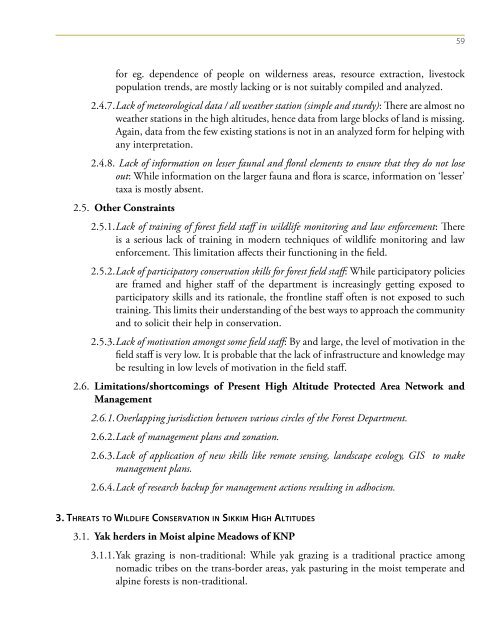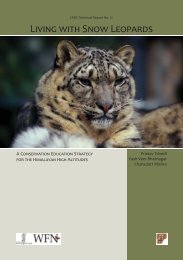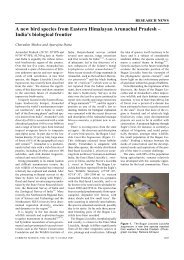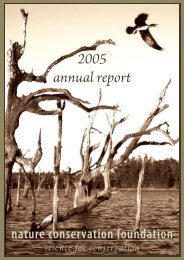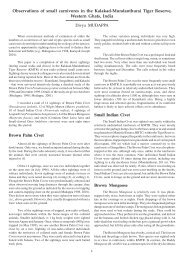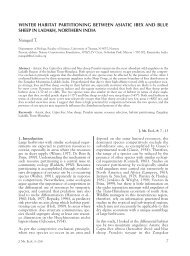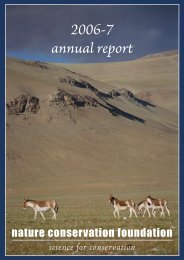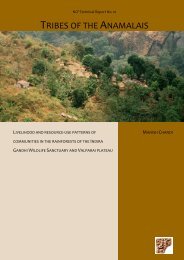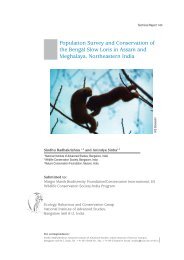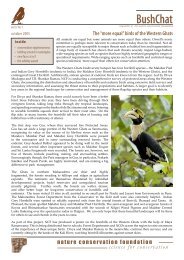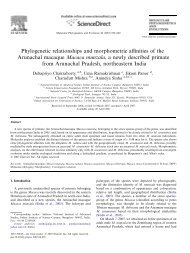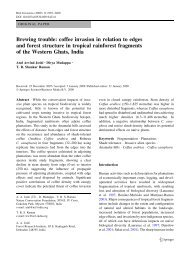towards project snow leopard - Nature Conservation Foundation
towards project snow leopard - Nature Conservation Foundation
towards project snow leopard - Nature Conservation Foundation
Create successful ePaper yourself
Turn your PDF publications into a flip-book with our unique Google optimized e-Paper software.
59<br />
for eg. dependence of people on wilderness areas, resource extraction, livestock<br />
population trends, are mostly lacking or is not suitably compiled and analyzed.<br />
2.4.7. Lack of meteorological data / all weather station (simple and sturdy): There are almost no<br />
weather stations in the high altitudes, hence data from large blocks of land is missing.<br />
Again, data from the few existing stations is not in an analyzed form for helping with<br />
any interpretation.<br />
2.4.8. Lack of information on lesser faunal and floral elements to ensure that they do not lose<br />
out: While information on the larger fauna and flora is scarce, information on ‘lesser’<br />
taxa is mostly absent.<br />
2.5. Other Constraints<br />
2.5.1. Lack of training of forest field staff in wildlife monitoring and law enforcement: There<br />
is a serious lack of training in modern techniques of wildlife monitoring and law<br />
enforcement. This limitation affects their functioning in the field.<br />
2.5.2. Lack of participatory conservation skills for forest field staff: While participatory policies<br />
are framed and higher staff of the department is increasingly getting exposed to<br />
participatory skills and its rationale, the frontline staff often is not exposed to such<br />
training. This limits their understanding of the best ways to approach the community<br />
and to solicit their help in conservation.<br />
2.5.3. Lack of motivation amongst some field staff: By and large, the level of motivation in the<br />
field staff is very low. It is probable that the lack of infrastructure and knowledge may<br />
be resulting in low levels of motivation in the field staff.<br />
2.6. Limitations/shortcomings of Present High Altitude Protected Area Network and<br />
Management<br />
2.6.1. Overlapping jurisdiction between various circles of the Forest Department.<br />
2.6.2. Lack of management plans and zonation.<br />
2.6.3. Lack of application of new skills like remote sensing, landscape ecology, GIS to make<br />
management plans.<br />
2.6.4. Lack of research backup for management actions resulting in adhocism.<br />
3. Threats to Wildlife <strong>Conservation</strong> in Sikkim High Altitudes<br />
3.1. Yak herders in Moist alpine Meadows of KNP<br />
3.1.1. Yak grazing is non-traditional: While yak grazing is a traditional practice among<br />
nomadic tribes on the trans-border areas, yak pasturing in the moist temperate and<br />
alpine forests is non-traditional.


